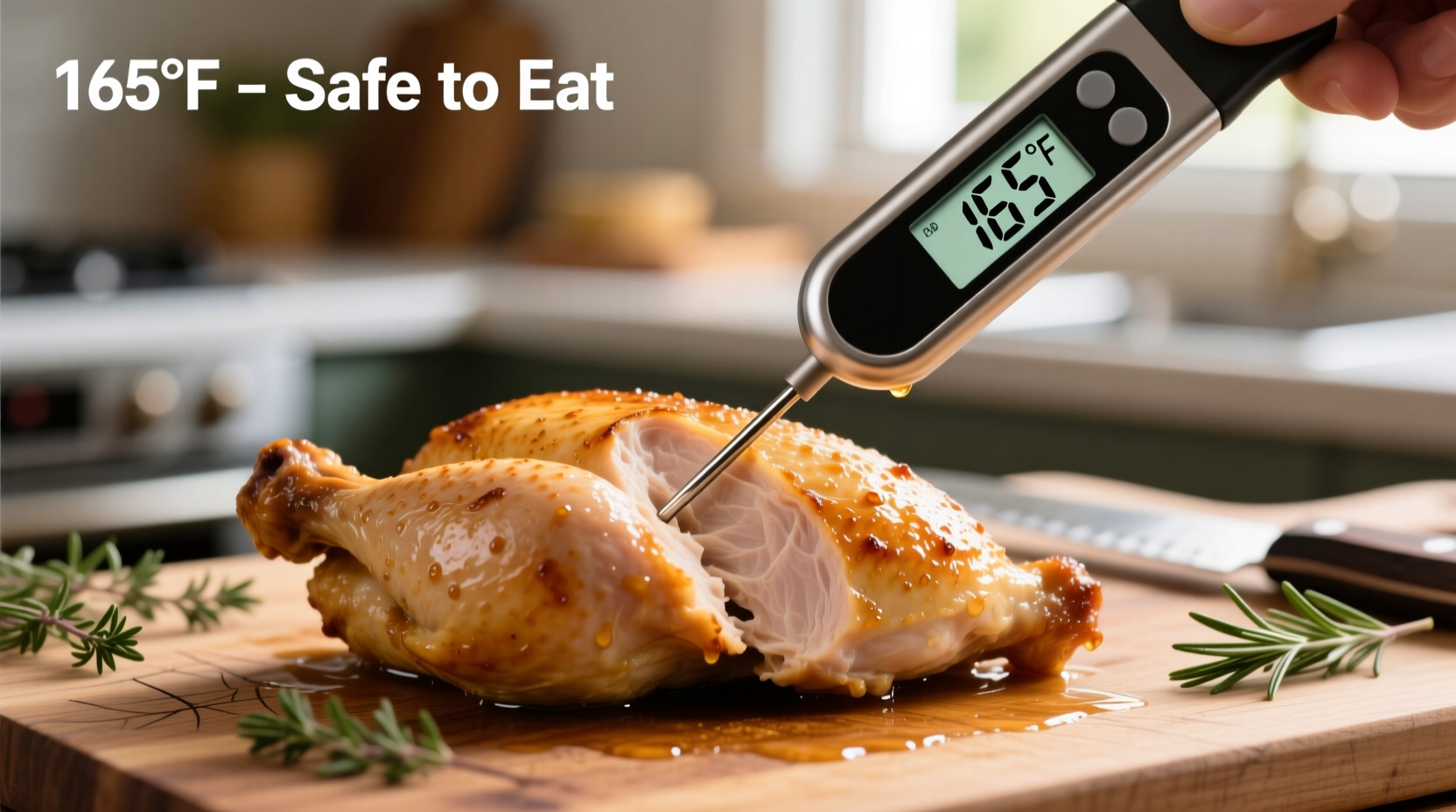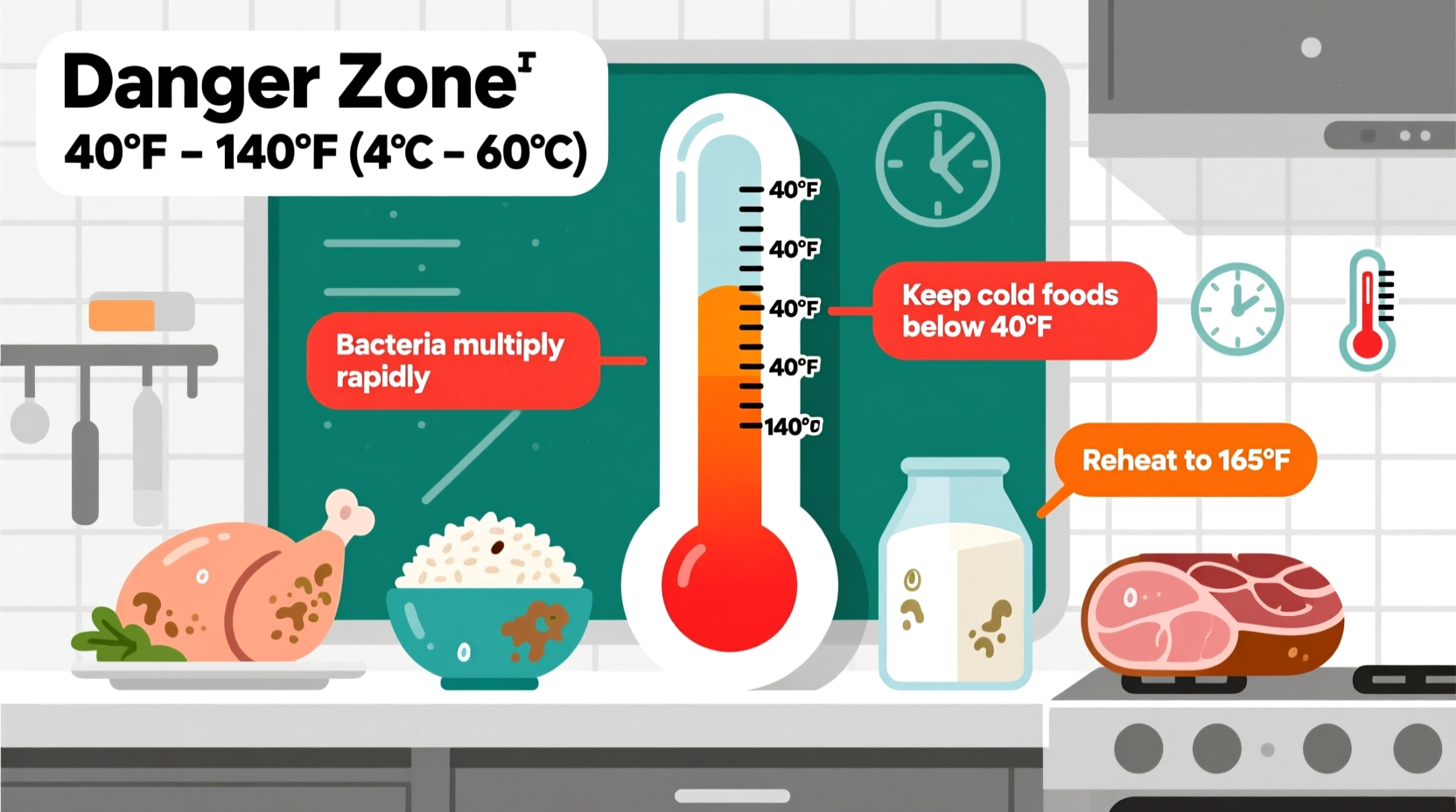Understanding the food danger zone isn't just kitchen trivia—it's your first line of defense against foodborne illness that affects 48 million Americans annually. When perishable foods linger in this critical temperature range, bacteria like Salmonella, E. coli, and Listeria can double in number every 20 minutes, turning a simple meal into a health emergency. This guide delivers actionable food safety strategies backed by food science experts, helping you protect yourself and others through proper temperature management at every stage of food handling.
Why the Danger Zone Matters for Your Health
Food safety professionals consider the danger zone one of the most critical concepts in preventing foodborne illness. When food enters this temperature range, it creates ideal conditions for pathogen growth. The USDA Food Safety and Inspection Service reports that foodborne illnesses cause approximately 128,000 hospitalizations each year in the United States, with improper temperature control being a leading contributing factor.
Consider this real-world scenario: leaving cooked chicken on the counter during a summer barbecue while you finish side dishes. Within just 60 minutes in 95°F weather, that chicken could contain enough bacteria to make multiple people seriously ill. The danger isn't always visible or detectable by smell—contaminated food often appears perfectly normal.

Temperature Thresholds: What Science Tells Us
Multiple food safety authorities agree on the critical temperature parameters, though slight variations exist in their recommendations. This comparison shows how major organizations define the danger zone:
| Organization | Danger Zone Range | Maximum Safe Time | Special Considerations |
|---|---|---|---|
| USDA FSIS | 40°F-140°F (4.4°C-60°C) | 2 hours (1 hour if >90°F) | Recommends cooking poultry to 165°F |
| FDA Food Code | 41°F-135°F (5°C-57°C) | 4 hours cumulative | Commercial kitchen standards |
| CDC | 40°F-140°F (4.4°C-60°C) | 2 hours | Emphasizes high-risk populations |
| WHO | 5°C-60°C (41°F-140°F) | 2 hours | Global food safety standards |
These authoritative sources all agree that bacterial growth accelerates dramatically within this temperature band. Research published in the Journal of Food Protection demonstrates that Staphylococcus aureus can reach dangerous levels in as little as 90 minutes when food remains in the danger zone. The slight variations in temperature thresholds reflect different risk tolerance levels for commercial versus home settings.
How Time Amplifies the Danger
The relationship between time and bacterial growth follows an exponential curve, not linear progression. This timeline illustrates how quickly food becomes unsafe:
- 0-20 minutes: Bacteria begin adapting to the environment
- 20-40 minutes: First generation of bacteria completes reproduction
- 40-60 minutes: Bacterial population doubles again
- 60-120 minutes: Population reaches levels that can cause illness in sensitive individuals
- 2+ hours: High risk for all consumers, with potential for severe illness
The FDA's Food Code specifies that potentially hazardous foods can accumulate up to 4 hours in the danger zone during preparation, cooking, and cooling processes—but this is for commercial kitchens with strict monitoring protocols, not home use. For home food safety, the USDA recommends the stricter 2-hour rule with no accumulation.
Practical Temperature Control Strategies
Preventing food from entering the danger zone requires proactive temperature management at every stage:
Refrigeration & Freezing
Keep your refrigerator at or below 40°F (4.4°C) and use an appliance thermometer to verify temperatures. The USDA recommends storing raw meat on the bottom shelf to prevent cross-contamination. When marinating foods, always do so in the refrigerator—never on the counter.
Cooking to Safety
Use a food thermometer to verify internal temperatures. Different foods require different minimum temperatures:
- Poultry: 165°F (73.9°C)
- Ground meats: 160°F (71.1°C)
- Beef, pork, veal, lamb steaks: 145°F (62.8°C) with 3-minute rest
- Fish: 145°F (62.8°C) or until flesh flakes easily
Hot Holding & Transportation
When transporting hot foods, use insulated containers that maintain temperatures above 140°F. For buffet service, divide large portions into shallow containers to cool faster and use warming trays, chafing dishes, or slow cookers to maintain safe temperatures.
Cooling Leftovers Properly
Refrigerate leftovers within 2 hours of cooking (1 hour if above 90°F). Divide large portions into smaller, shallow containers to cool faster. Never place a large pot of hot soup directly in the refrigerator—this raises the temperature of surrounding foods into the danger zone.
Special Considerations for Different Food Types
While the danger zone applies universally, certain foods present unique challenges:
- Rice and pasta: Can contain Bacillus cereus spores that survive cooking and multiply rapidly when cooled slowly
- Dairy products: Particularly vulnerable to Listeria, which can grow even in refrigerated conditions
- Cut fruits and vegetables: Increased surface area accelerates bacterial growth
- Cooked starches: Potentially hazardous when held at room temperature
For high-risk populations including young children, elderly individuals, pregnant women, and immunocompromised people, the consequences of foodborne illness can be significantly more severe. The CDC reports that these groups account for 70% of foodborne illness hospitalizations despite representing only 25% of the population.
Common Danger Zone Misconceptions
Several persistent myths can put people at risk:
- "If it smells okay, it's safe": Many dangerous bacteria don't produce noticeable odors
- "A little pink in chicken is fine": Color isn't a reliable indicator of safety—use a thermometer
- "Room temperature thawing is convenient": The outer layers enter the danger zone while the center remains frozen
- "Leftovers are good for a week": Most cooked foods should be consumed within 3-4 days
Temperature abuse remains the leading cause of foodborne illness outbreaks in both commercial and home settings. A 2023 study by the Journal of Food Protection found that 68% of home food poisoning cases involved food that had remained in the danger zone for more than two hours.
Essential Tools for Danger Zone Prevention
Investing in these tools creates multiple safety layers:
- Digital food thermometer: Instant-read models provide accurate readings in seconds
- Appliance thermometer: Monitors actual refrigerator and freezer temperatures
- Coolers with ice packs: Maintain cold temperatures during transportation
- Timer: Track how long food has been at room temperature
- Shallow storage containers: Promote rapid cooling of leftovers
Remember that visual cues and smell are unreliable indicators of food safety. The only accurate way to determine if food has remained safe is through proper temperature monitoring. Developing consistent habits around temperature control significantly reduces your risk of foodborne illness.











 浙公网安备
33010002000092号
浙公网安备
33010002000092号 浙B2-20120091-4
浙B2-20120091-4